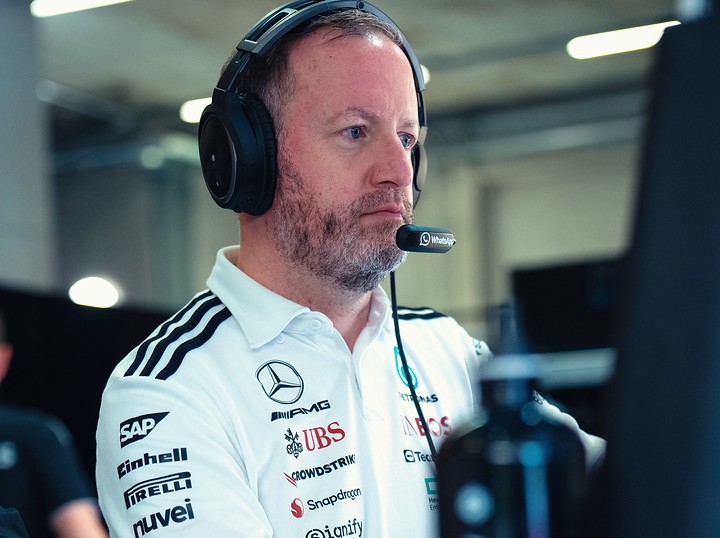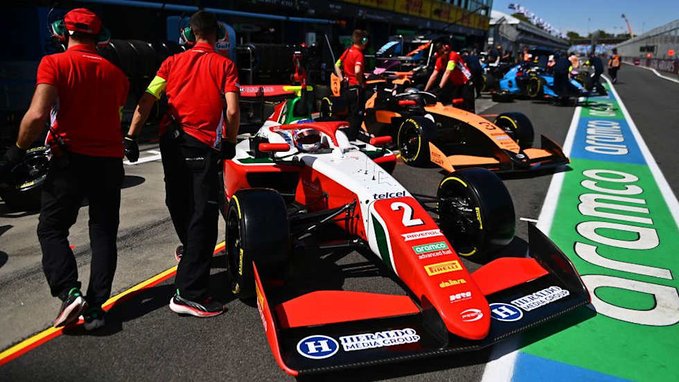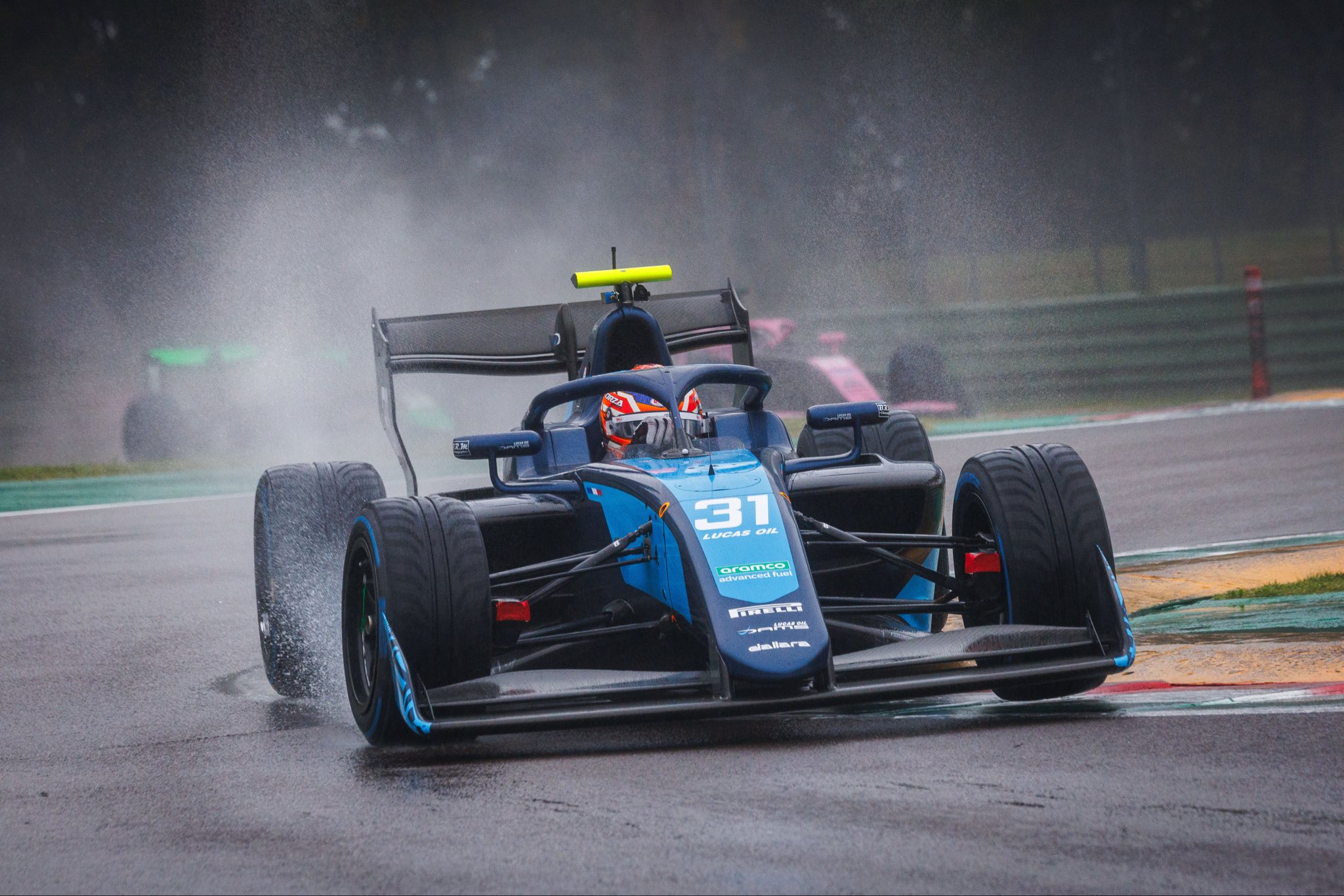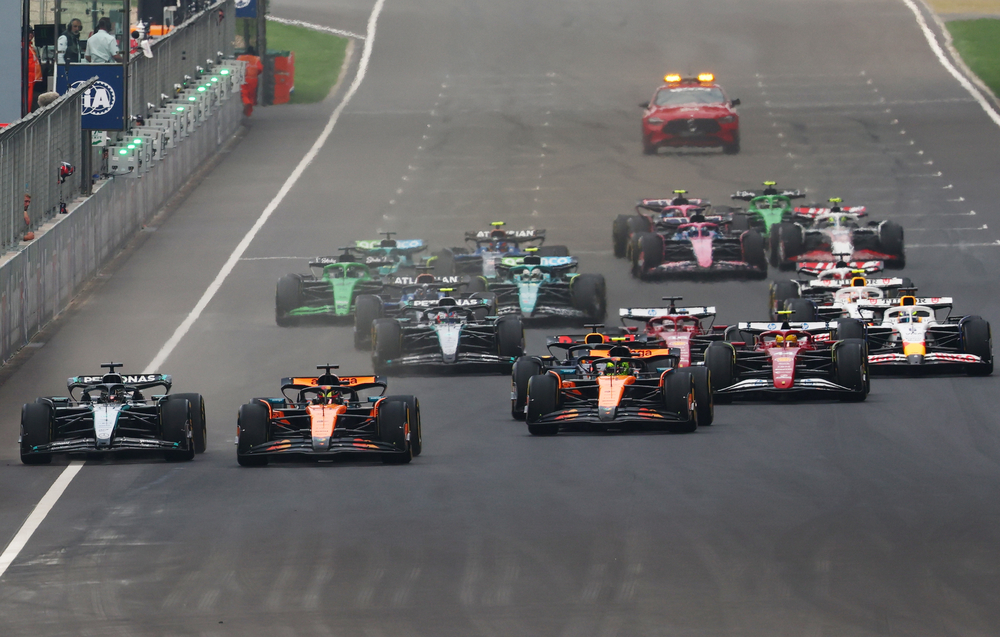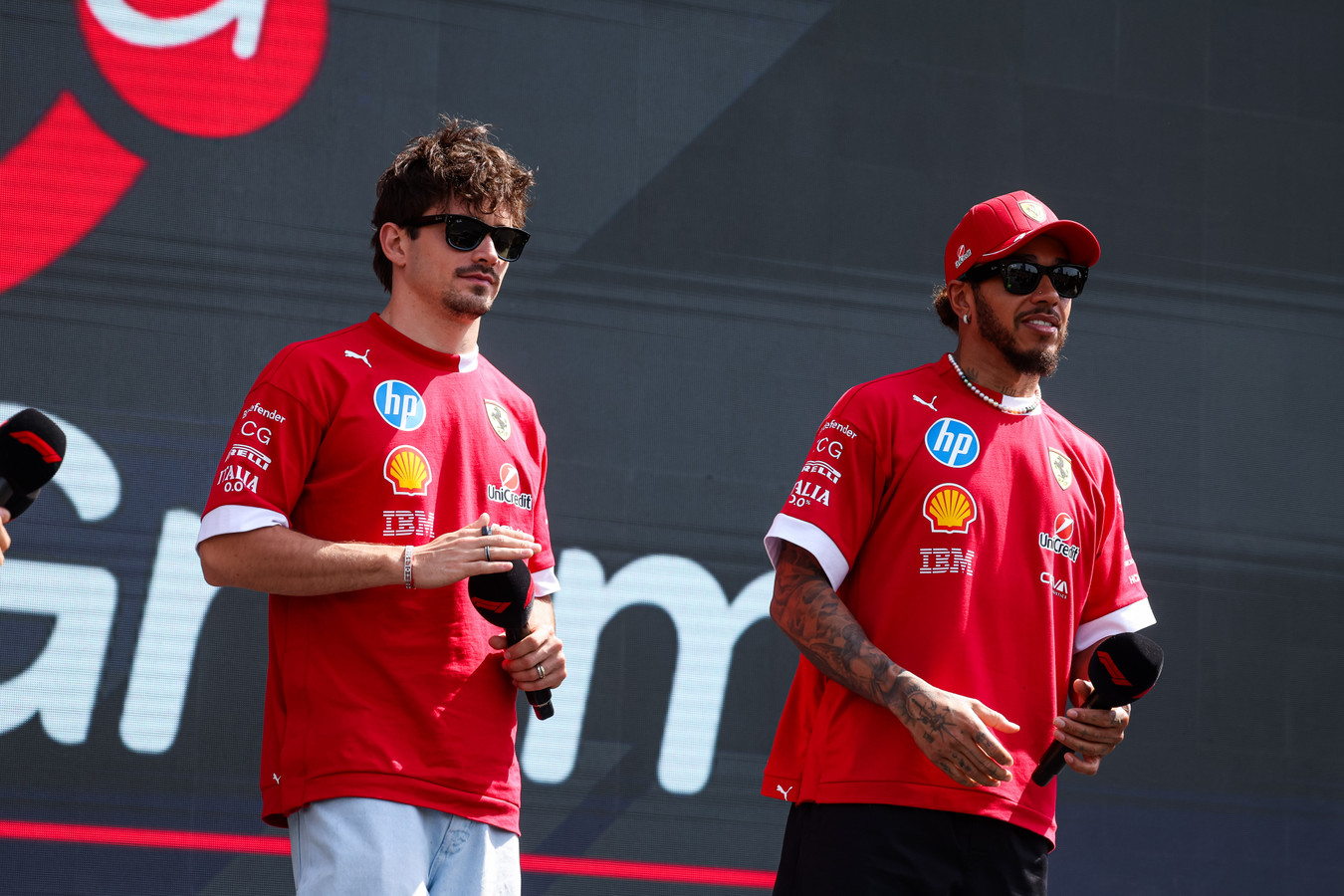Team representative Bradley Lord explained how tyre troubles hampered Mercedes’ performance in the F1 Imola GP.
Saturday sparked hope for a promising performance in the race after George Russell secured P3 in qualifying, ahead of McLaren’s Lando Norris.
However, tyre woes on Sunday made for a disappointing outing for Mercedes. After home hero Kimi Antonelli was forced to abandon his W16 due to a throttle issue on Lap 45, Russell, as the sole Mercedes driver, was only able to muster P7 amid tyre overheating issues. The result ended Russell’s streak of top five finishes in 2025.
“The big limitation today was rear axle for us and rear overheating,” Lord, Chief Communications Officer at Mercedes, said in a print media session after the race.
“We have found ourselves front limited at some circuits so far this year, so we’ve got the challenge of the work this weekend has been on the rear axle and that’s been our big limitation. It’s clear.
“It felt like the gap between our qualifying pace and our race pace was, if anything, bigger this weekend and in the race today, rather than smaller, which obviously was the aim of the work that we’ve been doing.
“Lots for us to dig through and understand better in order to see where we’ve made improvements with the car and where potentially we’ve taken the wrong path and may need to change our thinking and change what we’re doing in order to have less of a delta between the single lap pace and then the long run pace.
“Because certainly there were plenty of cars who qualified behind us who were matching us, if not quicker than us, over those longer stints.”
How tyre performance impacted Mercedes strategy in the F1 Imola GP
Ferrari’s Charles Leclerc made early gains as the undercut proved powerful in the first half of the race. Asked whether there was anything Mercedes could have done to counter it, Lord commented, “I think Leclerc stopped early because he was in difficulty with the tyres.
“The plan and the base plan, as we saw the cars at the front do, was to try and make a one-stop work, a medium-hard one-stop, and so we didn’t immediately see the need to cover.
“But then George came on the radio and said tyres are going and he could see the rear right tyre in particular very badly grained. And so that was the trigger to stop and by then, yes, we had been undercut. We similarly undercut some other cars in the same way, but overall the early stop was forced on us by a limitation rather than being the plan that we’d had going into the race.”
Homework for the team
Mercedes had a strong start to the season, with Russell making four podium appearances in seven rounds.
However, it seems they’ve hit a rough patch, some weaknesses—particularly pertaining to tyre performance—creeping in as the season progresses.
“I think in general we’ve seen a performance improvement overall from the car in terms of its overall pace, but that still remains our biggest limitation,” Lord stated.
“As I say, this weekend is a slightly different thing to what we’ve seen at other races and it’s less the tyre overheating, but you hit the top of the acceptable and usable window of the tyre quicker than other cars that seem able to run faster for longer before they’re either capped by the upper end of the working range or simply don’t get there and are able to exploit their full pace for much longer.
“So that’s what we’ve got to understand. It clearly is a continuation of a trend from last year, albeit there will be subtle differences in there as well. That’s the high priority for us to understand and work on so that we can start racing as we have done at points this season and generally in slightly cooler conditions start racing in the same neighbourhood as we’re qualifying in.”
Lord continued: “It’s always more than a single factor. It would be presumptuous of me to try and go into specific technical detail. Obviously that’s not my core area of expertise, so I don’t want to venture too far into the unknown, but certainly it’s a more complex, multi-dimensional problem than simply high track temperature, therefore, problem.
“It’s how we’re using the tyre, how we’re cooling the tyre or otherwise and the interaction of all of those elements.”
Starting on used tyre “unlikely” to explain performance drop-off in the race
Asked whether Mercedes’ decision to start Russell on a used medium tyre could have contributed to the early drop-off in performance in the F1 Imola GP, Lord suggested it was unlikely to have made a decisive difference.
“He wasn’t the only car on a used tyre, so I guess it’s possible, but hard to know,” Lord noted.
“We don’t have a clear read on it because we didn’t have a direct back-to-back, so I guess there’s a possibility of that, but equally we didn’t think that would be the case and that was why we were willing to take the decision to run that medium yesterday. We felt that that was worth the risk we were taking with potentially losing the tyre set in order to maximise the qualifying position.
“Maybe that put us a little higher than we were naturally on pure pace, but then we didn’t expect that to be a huge limitation for the tyre life. You were looking to take a medium to about lap 20 to be able to make a one-stop work and obviously we weren’t able to do that, but equally we weren’t within one timed lap of lap 20 before we had to pit, so I think that’s unlikely to have been a factor.”
Strategy shake-up on Sunday
Heading into the F1 Imola GP weekend, it looked like the strategy for Sunday would, in most cases, be a pretty straightforward one-stopper. However, the race became more strategically diverse than expected.
Lord explained that this was primarily due to the track temperatures, higher on Sunday than previous days of running.
“I think that was the big change, was I think about 10 to 12 degrees of track temperature,” he said.
“We were at the mid-40s, the hottest we had been all weekend at the start of the race. Now, that was predicted and we had seen that I think in, was it FP3 as well, or the start of qualifying even, and obviously the circuit rubbers in.
“We had rain overnight, Friday to Saturday, so a lot of different factors changed, but I guess part of the thinking behind bringing that C6 was to push a race like this towards a much more marginal one or two-stop. We certainly saw a variety of approaches today, obviously the safety cars and the VSC somewhat stretched the gaps and then re-normalised it as well.
“But from that point of view I mean it’s not made the engineering challenge any easier in terms of managing these delicate compounds, but it certainly delivered a greater variety of strategy than maybe we’ve seen at this track in the past.
“So yeah, I think it’s just, it’s getting on top of particularly these softer compound tyres and making sure that you’re able to extract the performance from them without overloading them and that’s clearly an area where we’ve still got a chunk of work to do.”

